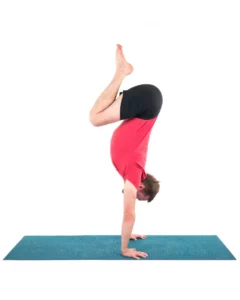5 Ways Thickened Fascia Causes Chronic Pain

Article At A Glance
Although I have been discussing thickened fascia on my site for at least 15 years. The scientific community has often referred to thickened fascia as tissue that has undergone a process of densification. There is some very cool new research on the subject. These studies not only verify the thickened fascia hypothesis but could arguably help you both identify and start to address your chronic pain issues if they are related to thickened fascia, which so many painful situations are.
While this does not necessarily mean that you can take care of the fibrosis and microscopic scar tissue that’s already there. It’s likely that someone will have to do that for you. But how amazing would it be if you were able to halt future thickening and the vicious cycles of pain and degeneration it perpetuates?
Before we delve into the research, I want to take just a moment to review the differences between normal fascia and thickened fascia or what I often refer to as “fascial adhesions.”
Normal Fascia vs. Thickened Fascia
 But your new shoes are worn at the heels
But your new shoes are worn at the heels
And your suntan does rapidly peel
And your wise men don’t know how it feels
to be thick … as a brick. —Jethro Tull from 1972’s Thick as a Brick
Those of you who have been treating patients via various forms of bodywork for a very long time already know this information, at least intuitively. In other words, you don’t necessarily have to understand all the latest science or jargon to know what you have been feeling during your years (or decades) of providing treatment to people who are chronically ill, chronically stressed out, or living with pain. Or in far too many cases, all of the above.
5 Ways Thickened Fascia Causes Chronic Pain
1. Thickened Fascia is … Well … Thick
Yeah, I get it. Extremely redundant—a tautology if you will. But it bears repeating. The scientific/research portion of the medical community often uses the descriptive term “densification” to illustrate what’s going on at the cellular level. Think of it like a piece of paper that’s been crumpled into a ball instead of a nice, flat sheet. In a few areas of the body, and especially in the thoracolumbar fascia of younger people (especially athletes), the fascia should actually be thicker. Just remember, however, that in most cases, thicker is not better. Thickened fascia causes problems, including the following:
2. Thickened Fascia Is Less Elastic
One of the aspects of fascia that makes it truly amazing in a biomechanical sense is the fact that it is both very strong and very elastic. In most cases (see the previous point) a thickened fascia or other connective tissue means that it cannot stretch and elast the way it was created and designed to do. This means that in the case of thickened fascia, whatever the cause of thickening, there is a strong tendency toward diminished movement. Restriction.
While this protective mechanism can certainly be helpful in the case of acute injuries. In the case of chronic, repetitive injuries, it is not only detrimental, it can literally be catastrophic as far as pain and dysfunction is concerned.
3. Thickened Fascia Is Weak
This is where we can get a vicious cycle churning. It’s really a no-brainer. If thickened fascia is weaker it means that it will always be more prone to injury.

4. Thickened Fascia Is More Prone To Injury Or Re-injury
I speak with the voice of experience here. Not simply from my years of treating patients, but because as I will show you in a moment concerning my ankle, it’s an inescapable fact of life that once you have injured a joint—any joint—it will always be easier to injure it again. And again. And again. Yes, there are things you can and must do to slow down this process.
But the fact remains that even though it is quite possible to make huge differences in patients’ pain levels, it is impossible to get soft tissues back to their original strength and elasticity. Even after seemingly minor injuries. This is why you will sometimes hear the old-time docs say, “Johnnie; you’d have been better off breaking the leg than tearing those ligaments!” But it does not stop there.
5. Thickened Fascia Can Be Incredibly Pain-Sensitive
I am fascinated by the work of Chan Gunn, the medical neurologist from Vancouver who did a great deal of pioneering research on scar tissue 25 or so years ago. His ultimate conclusion as far as chronic pain is concerned? Scary stuff to say the least.
According to Dr. Gunn, scar tissue has the propensity to develop abnormally large numbers of immature nerve buds after injury—sort of like the hundreds of small twigs you sometimes see sprouting from the cut branches of topped trees. This phenomenon has the potential to make scar tissue over (over)1,000 times more pain-sensitive than normal tissue. Now add in the fact that fascia itself can act as a nervous system, and you can see a train wreck in the making.
Also, read...
Yoga Anatomy: The Gluteus Medius Muscle in Yoga
Why Some Poses Never Seem to Get Easier: The Answer is in Your Bones
Free Video with Dr. Ray Long: The Wonders of Diaphragmatic Breathing
Related courses
Keys to Effective Yoga Teaching: The Most Important Takeaways from a Life of Teaching
Yoga and Detoxification: Tips for Stimulating Lymphatic Health
Free Download! Sacred Teaching, Simple Truths: Five Decades of Yoga Wisdom

Dr. Schierling is a licensed chiropractor and world-renowned chronic pain specialist. Dr. Schierling specializes in a holistic approach to helping end his patients’ chronic pain that includes Scar Tissue Remodeling Therapy.


